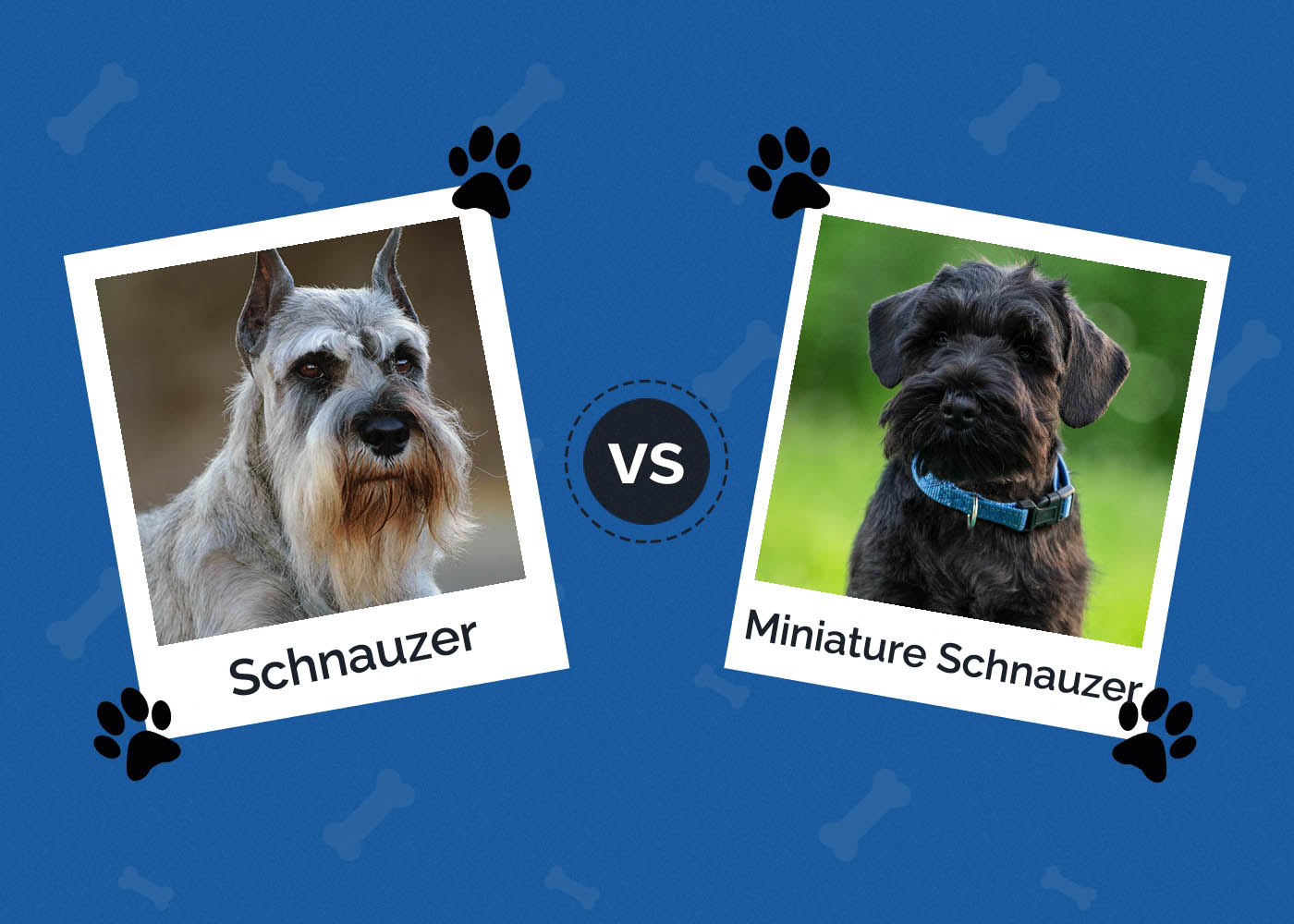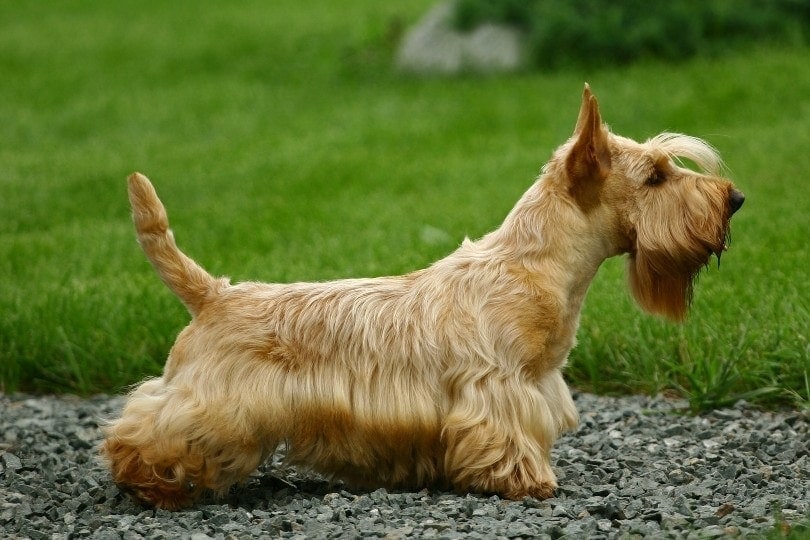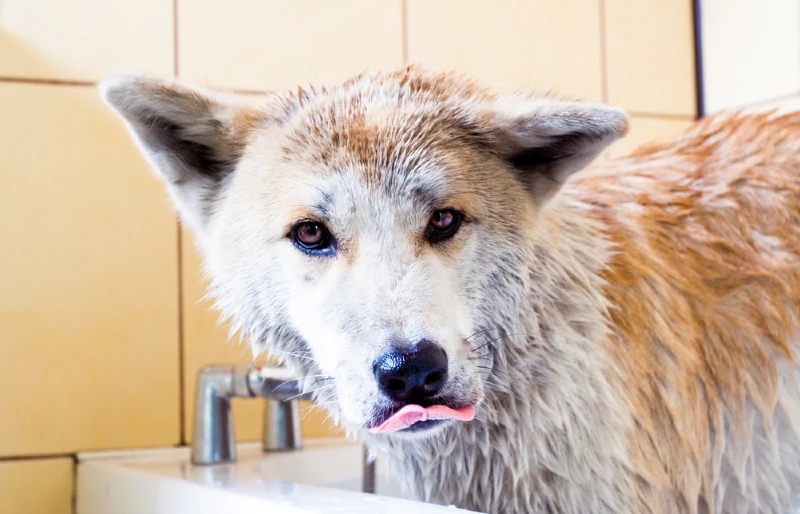Maltipoo vs Chihuahua: All the Differences (With Pictures)

Updated on
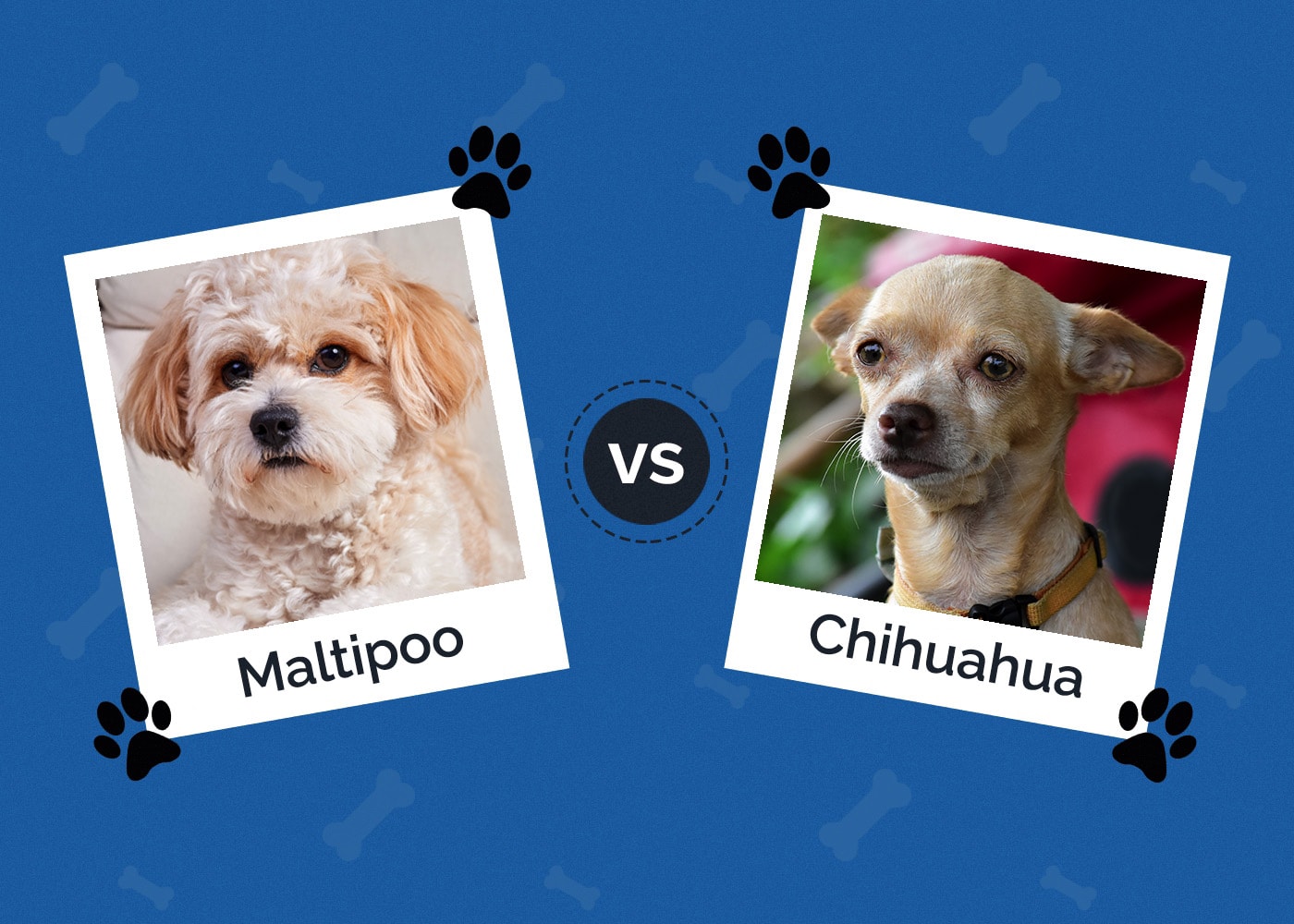
When contemplating adopting a dog, there are many factors to think about. Choosing a small dog breed rather than a large one may narrow down your options, but you will still need to think about the dog’s grooming needs, personality, and temperament. You may consider the shorter, smaller Chihuahua with a very strong personality, or maybe the calmer, hybrid Maltipoo with a wavy coat of fur.
The Maltipoo and the Chihuahua are two very popular dog breeds in the toy dog category. They may be small, but they are both lovable and full of character. In this article, we take a look at how they compare in terms of size, temperament, grooming requirements, and more to help you decide which toy breed is right for you!
Visual Differences
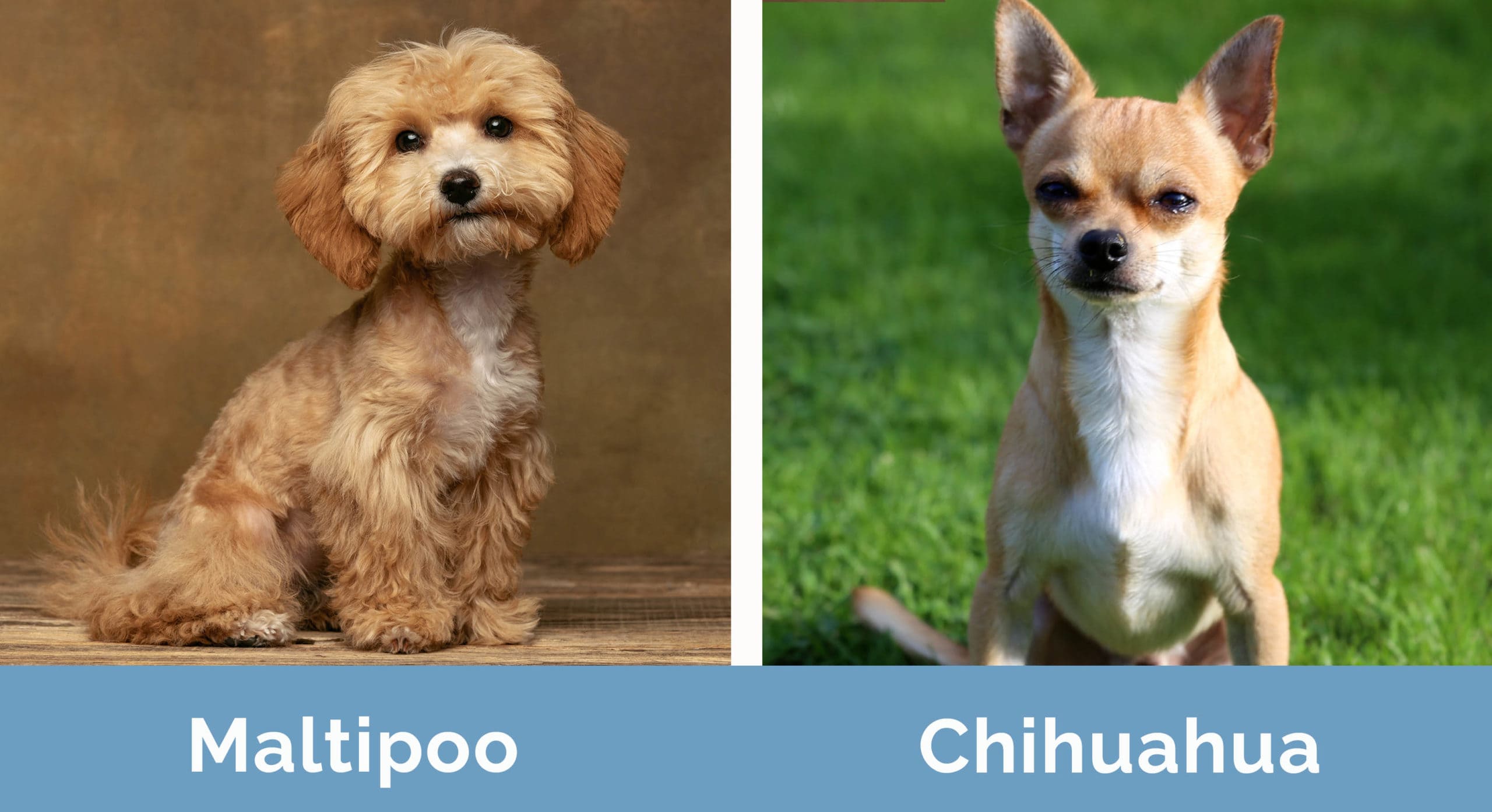
At a Glance
- Average height (adult): 7 to 14 inches
- Average weight (adult): 4 to 14 pounds
- Lifespan: 10 to 15 years
- Exercise: 10 to 15 minutes a day
- Grooming needs: Moderate
- Family-friendly: Yes
- Other pet-friendly: Often
- Trainability: Highly trainable, easy to train, quick learners
- Average height (adult): 5 to 10 inches
- Average weight (adult): 4 to 9 pounds
- Lifespan: 12 to 20 years
- Exercise: 30 minutes a day
- Grooming needs: Low
- Family-friendly: Yes, with training
- Other pet-friendly: No, may require training
- Trainability: Highly trainable, quick-witted, stubborn
Maltipoo Overview
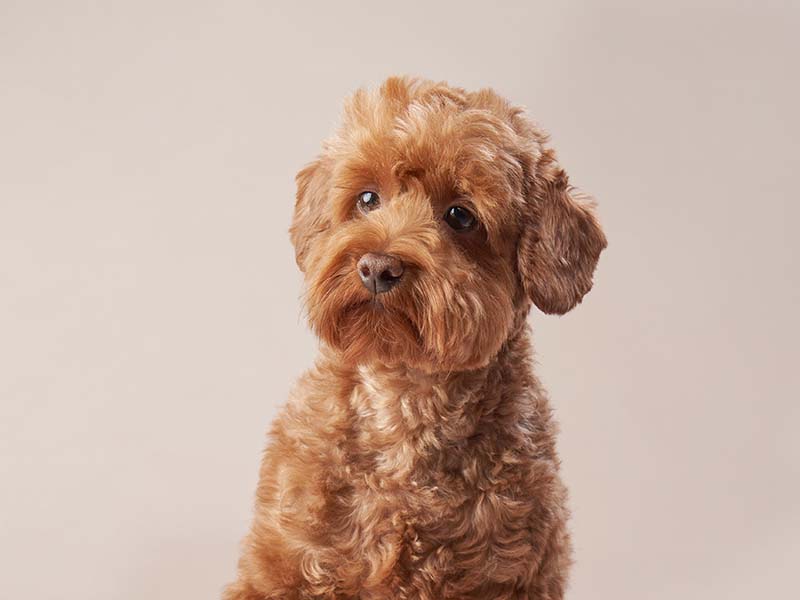
The cross between two favorite toy breeds, the Maltese and the Poodle, the Maltipoo has captured the hearts of many miniature dog lovers! This gentle, affectionate, and intelligent dog brings the best qualities of both the Maltese and the Poodle in one beautiful hybrid breed!
The history of the Maltipoo spans all the way back to the 1990s. Mixing the features of the German-bred Poodle with that of the Malta-born Maltese, the Maltipoo was first bred in the USA to be low-maintenance companions.
Compared to other dog breeds with history tracing all the way back to ancient times, the Maltipoo is a relatively young breed. Despite the breed only existing for around 30 years, the Maltipoo has since been a well-loved and popular choice for dog owners in favor of smaller dogs!
With the Poodle’s friendly and energetic personality mixed in with the Maltese’s non-shedding and hypoallergenic coat, the Maltipoo is perfect for first-time dog owners who are looking for a dog that is easy to groom, calm, friendly, and of course, adorably small! Whether your household has other pets, small children, or individuals with allergies, the Maltipoo is an excellent choice of dog to add to your family!
Size
Classified in the toy dog category, full grown Maltipoos are a small breed of dog. They are slightly larger and heavier than Chihuahuas with an average height of 7 to 14 inches, and can weigh around 4 to 14 pounds when fully grown.
Personality and Temperament
Maltipoos are friendly in nature, which makes them the perfect family dog! They are friendly, affectionate, and a generally happy breed. Gentle in nature, aggression is also unlikely with this breed unless intensely provoked. Easy going and mild-tempered, the Maltipoo’s personality allows them to get along with other pets—dogs and cats alike! They are also gentle and enjoy playing with children, making them a good choice for families with children.
However, due to their size, children must be taught how to act around Maltipoos, as they can get injured easily if rough-housed too much. Children must learn how to treat them with respect to avoid any unwanted retaliation from Maltipoos, especially if they get hurt. Otherwise, when both the Maltipoo and children learn how to properly interact with one another, they can become best friends for life!
Maltipoos are also highly intelligent, making them easy to train and an excellent choice for first-time dog owners. Their high intelligence and charming personality also make them great therapy dogs!
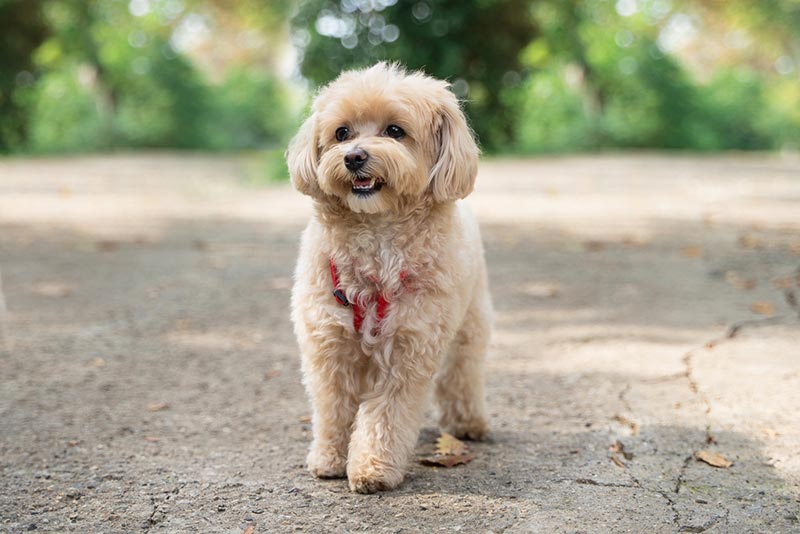
Grooming Requirements
A huge advantage of having Maltipoos is their hypoallergenic coat. Although no dog is truly hypoallergenic, Maltipoos suit allergy sufferers due to their minimal shedding. They are also generally clean dogs with minimal dander, which is the agent that triggers most allergies.
They have a wavy coat that is medium to long in length. To keep their coat healthy, brushing them at least twice a week is recommended. They may require professional grooming as needed to keep their coat short and tidy, especially during the warmer seasons. Maltipoos have sensitive skin that can easily become irritated if baths are given too often, so bathe only as necessary.
They will also require nail trimming and constant checking of their floppy ears. To prevent any dental issues, it is recommended to clean their teeth 2 to 3 times a week.
Training
Maltipoos are highly intelligent dogs and are easy to train, especially if exposed at a young age. They are eager to please and can pick up skills quickly, especially if provided with positive reinforcement, such as verbal praises and rewards!
Maltipoos can become cautious around strangers, but they generally get along with strangers, children, and other pets, especially when properly socialized at a young age.
Health & Lifespan
Maltipoos have a life span of 10 to 15 years. As dog owners, it is our responsibility to provide a healthy diet along with proper exercise to prevent a variety of health complications. Maltipoos are energetic dogs that only need 10 to 15 minutes of exercise a day to keep them fit. Maltipoos are easily prone to dental problems, which is why oral and dental hygiene is a top priority when it comes to grooming.
They are also susceptible to luxating patellae, progressive retinal atrophy, and heart disease.
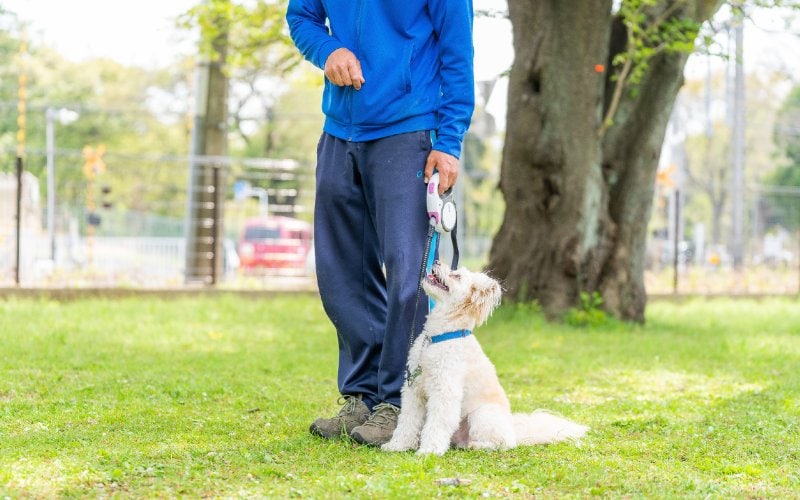
Suitable for:
Hypoallergenic, easy to maintain, and full of love, the Maltipoo is suitable for first-time dog owners who are still learning how to live with and train dogs for the house. They are excellent family dogs and are suitable for families and households with multiple pets and small children!
- Hypoallergenic
- Good with children
- Slightly shorter lifespan at 10–15 years
- Unpredictable features due to hybrid nature
Chihuahua Overview
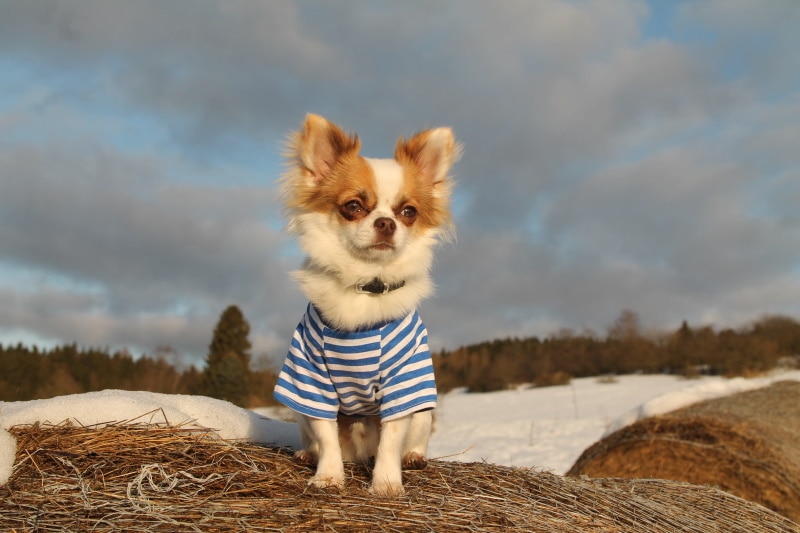
When talking about the most popular small dog breeds, the Chihuahua almost always comes up. The Chihuahua is known for their small but confident stature, and is arguably one of the most notable small dog breeds in the world.
This purebred dog was first noted in mid-19th century Mexico and was bred for companionship due to its personality and one-of-a-kind appearance. They derived their name from Chihuahua, the Mexican state of the same name. Historically, Chihuahuas had a natural instinct to hunt smaller animals, such as rodents, but due to their size, they were also considered prey to other larger animals.
With their round head, large eyes, and bat-like ears, this toy dog is oozing with personality larger than their tiny body can handle. They also come in short hair and long hair versions, bringing variety to the breed. Their fun-loving, affectionate, and unpredictable personality make them a favorite among small-breed dog lovers.
Size
Chihuahuas, both short- and long-haired, stand slightly shorter than Malitpoos at 5 to 10 inches, also weighing less at 4 to 9 pounds. With their short stature and light-weight build, Chihuahuas are considered one of the smallest breeds even among other fellow toy breed dogs.
Due to their small size, they are not recommended for young children, as their fragile physique can easily put them at risk of injury, especially during rough play with toddlers.
Personality and Temperament
The Chihuahua’s personality can be unpredictable. It can range from shy and timid all the way to confident, sociable, and outgoing! Nevertheless, Chihuahuas are generally alert, affectionate, and seek a lot of attention.
Chihuahuas are friendly and loving, making them perfect family dogs. They love showing affection and enjoy spending time with their humans. Their personalities make them great for children, but due to their size, they are not recommended as they can easily get hurt. They can also have feisty and cautious personalities, which can easily be triggered if, say, an overbearing child pushes them to their limits.
They are also very suspicious and protective around strangers, so early socialization and constant training is required to help them learn how to interact with unfamiliar people. They are also a jealous type of dog and generally do not do well with multi-pet households. They like being the only pet in the household, preferring to be the center of attention for all the humans in the family.

Grooming Requirements
Be it the short or long-haired variations of the breed, Chihuahuas are low maintenance and are easy to care for. They are seasonal shedders, shedding the heaviest during the transition of seasons, such as spring and fall. Due to their small size and length of fur, their shedding is easily managed.
Their coat is also low maintenance, and gentle brushing of their tiny body once or twice a week is recommended to keep their coat healthy. Baths are also required only as necessary, as they are generally easy to clean. They will also need nail trimming to keep their paws comfortable, and teeth cleaning 1–2 times a week to prevent dental disease.
Training
Chihuahuas are a highly intelligent and eager-to-please breed, making them very trainable dogs, especially during puppyhood! Although they can be stubborn, Chihuahuas respond well to a firm but kind approach in training. Positive reinforcement is also a huge requirement when trying to get your Chihuahua to learn a new skill.
With Chihuahuas’ strong personality, it is important to stop any unwanted behaviors as a puppy to prevent it from carrying over into adulthood. They must also learn how to socialize at an early age, especially when it comes to interacting with strangers and other animals.
Health & Lifespan
Chihuahuas are generally healthy dogs. They have a lifespan of 12–20 years and can easily live a long and happy life with a proper diet and up to 30 minutes of daily exercise. As a tiny breed full of energy, Chihuahuas need physical activity to prevent obesity. They are also prone to dental issues, which is why teeth cleaning is a top priority in your Chihuahua’s grooming.
Unfortunately, Chihuahuas are also prone to other diseases, such as hypoglycemia, gastric dilatation, and patent ductus arteriosus.
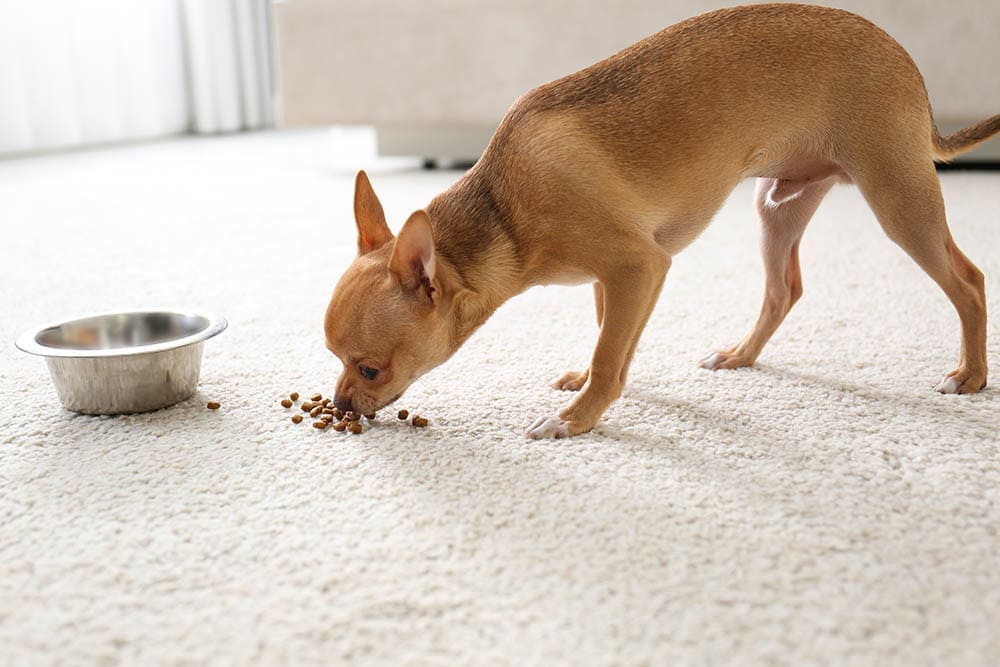
Suitable for:
A small dog with a big personality, Chihuahuas are suitable for families looking for a loving and affectionate dog that requires a lot of attention. The Chihuahua does not require much physical activity to stay fit, making them suitable for families that are unable to take the time for exercise, such as working individuals and the elderly. They are also generally not suitable for households with small children and other pets.
- Low maintenance
- Easy to train
- Fragile
- Generally not good with other pets
Conclusion: Which Breed is Right for You?
Choosing a pet is a big responsibility. Depending on your family’s set up, it is important to know which breed is the best fit for your family. Whether it’s the calm and the hypoallergenic Maltipoo or the energetic and larger-than-life Chihuahua, both of these dogs are sure to bring a special kind of joy into your family’s life!
Featured Image Credit: (L) marketlan, Shutterstock | (R) Sophon Nawit, Shutterstock



